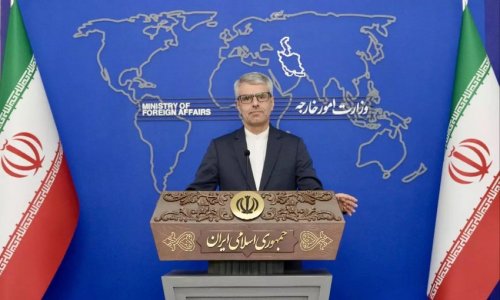Taipei, TaiwanTaipei residents are known for being extraordinarily friendly and extremely polite. Since the island was once a Japanese colony, it is not uncommon for shop employees to smile and bow in unison when someone walks through the doors. And nowhere is this friendliness more apparent than in the city’s surprisingly unique cafes. Topo Cafe, in northern Taipei’s Western-style Tianmu neighbourhood, is so offbeat it has a miniature, gold-fish filled river running through the middle of it.Alistair Chang, an American from the Washington DC area, lived in Taipei for a year, documenting his favourite coffee spots on his blog, Taipei Cafes. He said he especially loves the establishments near the Zhongxiao Dunhua transit station in southern Taipei’s Da’an district. “These cafes are a little bolder,” he explained in an e-mail. “Homey’s Cafe, for example, requires you to walk up two unmarked, sketchy cement stairs to find, while the Barbie Cafe is exactly what the title suggests: completely pink.”Apartments near the station range from studios to three-bedrooms, and are modern with no extra frills, though they can still be on the expensive side. With no shortage of entertainment options, the Da’an district has lots of shopping, restaurants and is famous for the Tonghua and Shida night markets, where street vendors serve up budget-friendly snacks and gadgets.There’s a particularly strong cafe culture near the National Taiwan University in Da’an. “This movement to create independent cafes in Taipei has really been driven by the younger generation,” Chang said. One of the district’s more popular spots is The Puzzle Cafe (022-362-0859; number 28, Lane 44, Tàishùn St), where friends can catch up over cappuccino and a 500-piece puzzle. Housing here caters to mostly students, so apartments tend to be on the smaller, simpler and more affordable side.Melbourne, AustraliaAustralia’s second largest city has the reputation for being friendlier than Sydney or Perth, and offers plenty of activities without having the frenetic energy of many other big cities. “We don't chortle 'good morning' at each other, but we're not afraid to make eye contact either,” explained Lou Pardi, a writer for the Melbourne Review newspaper.The city is broken up into areas called “villages”, each of which has its own vibe. “Fitzroy is traditionally edgy and grungy, Richmond has a Vietnamese and Greek influence, Coburg is Lebanese and Turkish and Brunswick is the hipster capital,” said Mike Dundon, owner of Seven Seeds Coffee in the village of Carlton.No matter where you live, though, it is easy to find great coffee. Pardi recommended stopping by Sonido, a South American-themed cafe in Fitzroy, a village known for having cafes with highly skilled baristas. Housing in Fitzroy is as quirky as the district itself, and includes everything from traditional Victorian-style cottages to modern converted warehouse lofts.Also filled with creative types, Collingwood is one of Melbourne’s oldest neighbourhoods, with many 19th-century buildings still in use as retail and apartment buildings. The village often puts an artistic spin on space, including the Collingwood Underground Theatre, which is housed in an abandoned car park underground.Much of the local energy seems to be underpinned by “cafe cubana”, the full-bodied espresso served with sugar that accompanies nearly every meal. “It is very easy to find really good cafe in Havana. Most restaurants and all paladares [privately owned restaurants] know how to deliver on cafe,” said Malia Evrette, the founder of social tour operator Altruvistas, who splits her time between Havana and California. And if you happen to be staying in a hotel for a few days while you get your bearings, she recommended that travellers seek out the espresso bar that most hotels will have in the back instead of settling for the bland, Cafe Americano-style coffee often served with breakfast.Dedicated coffee drinkers should look for apartments in La Habana Vieja (Old Havana) alongside some of the country’s most historic buildings. Located on the eastern edge of the city, La Habana Vieja is filled with colonial-era houses and mansions situated alongside plazas and parks.Despite its name, this area of the city still buzzes with young energy. With lots of bars and clubs, especially along the main drag of Calle Obispo, the nightlife runs into the early hours and the dancing sometimes even spills out into the streets.Vienna, AustriaAs a one of Europe’s smaller capital cities, Vienna offers the best of both worlds: the cultural amenities of a big metropolis with the affordable, well-kept housing of a smaller city. This environment also leads to a low-key, often independent vibe. While locals usually like to keep to themselves, they are friendly to visitors and often appreciate an outsider’s view on culture and current events.The city’s cafes make ideal spots for these types of conversations. “The Viennese value the fresh air of meeting visitors, including the musicians, conference attendees and those working for the UN,” said Eugene Quinn, an expat from London who organises monthly, English-language Vienna Coffeehouse Conversations.The grand old coffee houses (such as Cafe Central, Landtmann, Grindsteindl and Demel) may be a draw for tourists, but locals like to gather at lesser known spots, such as Cafe Fauenhuber, Braunerhof or Sperlhof. “At least half of the customers will be regulars,” said Christina Pritz, who lives near Vienna’s Augarten Park.Both Pritz and Quinn said they like Cafe Phil in central Vienna’s artsy 6th district, where books for either buying or borrowing line the walls and free concerts featuring groups with classical instruments or rotating DJs take place in the evenings. They also mentioned Cafe Hawelka, in the 1st district, where the small space often requires strangers to sit next to each other and meet.For those who want to be in walking distance of coffee shops, boutiques, restaurants and bars, Pritz recommended living in the 5th, 6th, 7th or 8th districts. “These areas are populated by families with kids as much as students, graduates and couples,” Pritz said. Families who prefer to live further out in some of the quieter areas can benefit from the city’s comprehensive network of affordable public transportation.Seattle, United StatesNo list of coffee cities would be complete without including the city that launched the world’s largest coffee chain. But even though Seattle is known globally for Starbucks, many locals prefer the independent spots that feature local art on the walls and fair trade coffee in their cups.While Washington state residents are polite, outsiders say they often experience the “Seattle Freeze”, a quality that makes it hard to strike up spontaneous conversations with strangers and even harder to develop deeper relationships, even after living there for years. That said, there is an underlying sense of community. “The successes of one group in the city are seen as the collective success of the entire city,” said Dayl Eccles, who lives in the University District in Seattle’s northeast. The sense of shared identity and pride most recently was evidenced when the city’s residents came out in droves to celebrate the Seattle Seahawks winning the 2013 Super Bowl.Much of Seattle’s social life somehow revolves around the city’s numerous cafes. “The sense of community in Seattle is housed where the coffee is brewed,” Eccles said. “That's where you go for dates, for meetings, to end and begin a night on the town, to end and begin your day, to study or to people watch.” Her personal favourite place is the University District’s Cafe Allegro, the city’s first espresso bar (established in 1975) and the birthplace of Starbucks’ signature roast, developed by Cafe Allegro founder and roaster Dave Olson.While any neighbourhood will have plenty of coffee options, Seattle residents feel very loyal to their particular district and tend not to move far once they have found their niche. Some of the more famous neighbourhoods include the funky Fremont (famous for its massive, under-the-bridge troll), the hip-but-family-friendly Ballard, and Queen Anne, named for its stately 1850s-era houses. Rome, ItalyWords like “latte,” “cappuccino” and “espresso” are all Italian, so it should come as no surprise that the country’s capital overflows with cafe culture. While locals can seemed rushed and always on the go, most will slow down for their morning coffee ritual. “There is no such thing as coffee to go,” said Elizabeth Minchilli, who blogs about her experience living in Rome over the past 25 years. “Even while enjoyed standing up at the counter, drinking espresso is when you stop, enjoy what is in front of you, and chat with friends, the barista or the next person over.”One of the most atmospheric areas to experience that temporary slow-down is in the centro storico, or historical centre. “Sitting down in an outdoor cafe, watching the people go by, has got to be one of the great luxuries of living in Rome,” Minchilli said. The chicest citizens congregate in Piazza San Lorenzo in Lucina, near Parliament, while the more hip and laid-back flock to the Piazza Madonna dei Monti. The rione (neighbourhood) of Monti is especially known for its ever-changing line up of trendy boutiques, cafes and restaurants. Whatever the cafe of choice, Italians share an unspoken rule of what drink to order when: cappuccino in the morning and only a caffe (espresso) after eating. “Italians will poke fun at Englishmen or Americans who order a cappuccino after a big plate of pasta on a full stomach,” said Tess Amodeo-Vickery, an American singer-songwriter who has lived in Rome full-time since 2009. Later in the evening, the drink of choice is caffe corretto, an espresso served with a shot of grappa or brandy – the perfect way to wind down for the night, or get a head start on the Roman nightlife.(BBC)ANN.Az
The world’s top coffee cities - PHOTO
World
21:29 | 24.04.2014

The world’s top coffee cities - PHOTO
In many of the world’s top coffee cities, the cafe is more than just a place to get a warm drink – it is also a hub of culture and conversation for locals and visitors alike. And while each city defines its coffee culture in a different way – whether it be by their classic drink style or by the sheer concentration of independently owned coffee houses – these six cities, taken from “best of” lists in publications including Travel and Leisure and the USA Today, have one thing in common: the cities are filled with people who life for the craft of coffee.
Follow us !










